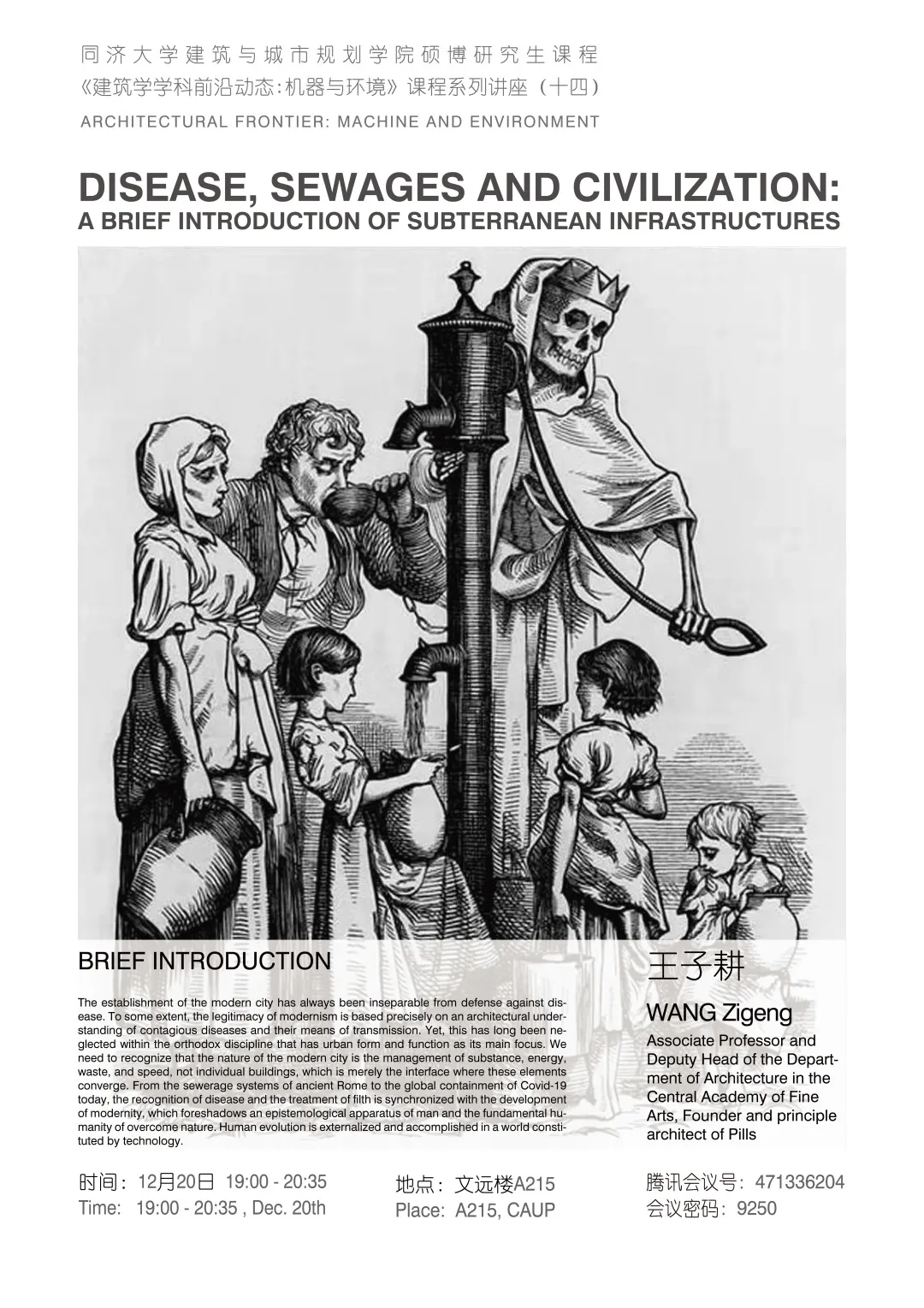新闻中心



2021年秋季研究生课程“建筑学学科前沿动态:机器与环境”第十二讲

Speaker: WANG Zigeng
演讲人:王子耕
时间:12月20日 19:00-20:35 地点:文远楼A215
Time:19:00-20:35, Dec. 20th Place:A215, CAUP
Brief Introduction
The establishment of the modern city has always been inseparable from defense against disease. To some extent, the legitimacy of modernism is based precisely on an architectural understanding of contagious diseases and their means of transmission. Yet, this has long been neglected within the orthodox discipline that has urban form and function as its main focus. We need to recognize that the nature of the modern city is the management of substance, energy, waste, and speed, not individual buildings, which is merely the interface where these elements converge. From the sewerage systems of ancient Rome to the global containment of Covid-19 today, the recognition of disease and the treatment of filth is synchronized with the development of modernity, which foreshadows an epistemological apparatus of man and the fundamental humanity of overcome nature. Human evolution is externalized and accomplished in a world constituted by technology.
现代城市的建立一直与人类对疾病的防御密不可分。某种程度上,现代主义的正当性正是建立在对传染病及其传播途径的建筑学认识上。然而,这却在以城市形态和功能为要义的正统学科内长期被忽略。我们需要认识到,现代城市的本质是对物质、能源、废料和运输速度的管理,而不是单个建筑,建筑只是这些元素交汇的界面。从古罗马的下水道系统到今天的全球共同遏制新冠疫情,疾病认知和污物处理水平的发展,与现代性的发展是同步的,这预示着人类的认识论机器和克服自然的基本人性。人类进化就是在一个由技术构成的世界中被外化和完成的。